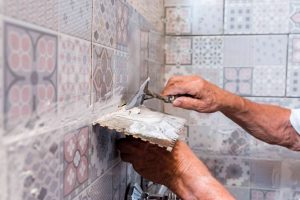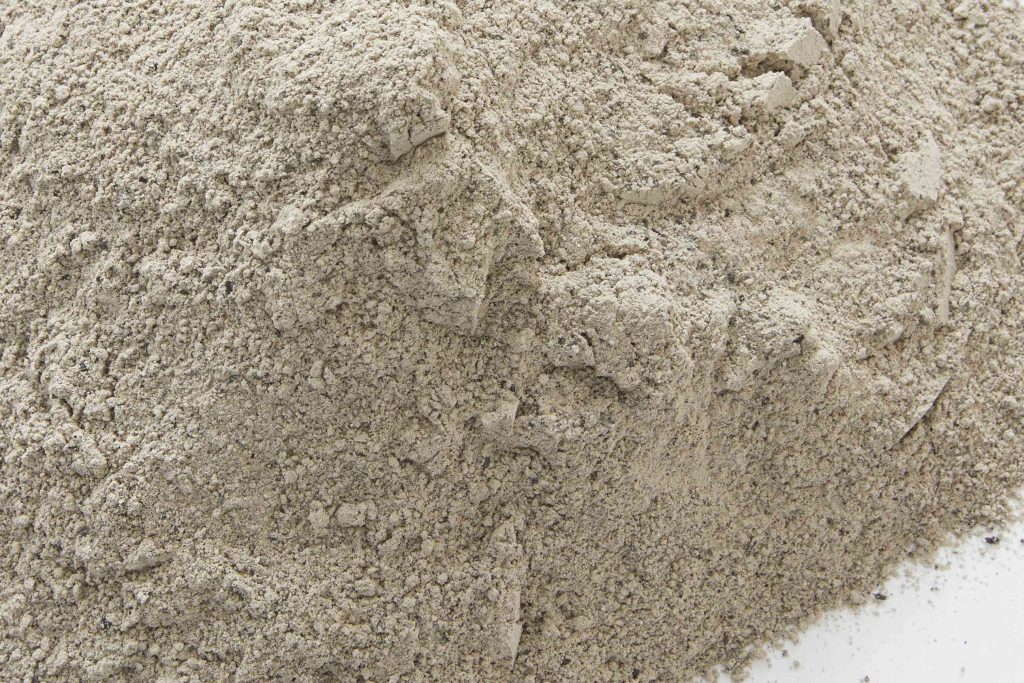Coal power plants generate electricity by burning pulverized coal, which creates a hazardous byproduct known as fly ash. On its own, fly ash doesn’t have any real benefits. In the past, it was released into the atmosphere, but this had a negative effect on the air quality, so regulations were put in place to control how it is disposed. It’s now collected and stored at coal power plants or sent to landfills.
However, the danger to humans, wildlife, and the environment presented by fly ash production can be mitigated by using fly ash to improve the composition of concrete. Since fly ash contains aluminous and siliceous components, it may form cement when mixed with water if the calcium content of the fly ash is high enough. Similarly, mixing fly ash with lime and water can create a substance similar to Portland cement.
Fly ash can be separated into two main types, known as Class F and Class C. Class F fly ash contains particles covered in a type of melted glass allowing it to reduce the risk of concrete expansion and increase resistance to sulphates and alkali-aggregate reactions. Class C fly ash contains a higher percentage of calcium oxide, making it more effective in strengthening structural concrete.
Find out more about fly ash and how it is used in concrete with this thorough guide.
What Is Fly Ash?
Fly ash is a finely divided residue made from the combustion of pulverized coal that can be used to increase concrete durability and workability, while reducing permeability.
Fly Ash Applications and Uses
In the commercial and industrial sectors, fly ash has a wide variety of applications and uses, though it is primarily known for improving the durability and workability of concrete mixes. Fly ash is also a filler in paints, adhesives, and metal and plastic composites. It’s commonly used as structural fill for road construction and fly ash can be used to make bricks, ceramic tiles, plaster, Portland cement, and ready-mix cement.
Other building materials that may contain fly ash include hot mix asphalt, grout fill, wallboard, concrete pipes, and concrete bricks. In fact, fly ash can be substituted in a Portland cement mix at a ratio of about 1.5 pounds of fly ash for every 1 pound of cement mix. Accordingly, the amount of fine aggregate in the concrete mix must be reduced to accommodate the additional volume of the fly ash.
Cost and Environmental Impact
Fly ash isn’t a product that the average DIYer would find on the shelves at a local home improvement store. This substance is recognized as a hazardous byproduct created by burning coal and it is regulated by the EPA, so only companies with the appropriate training and permissions may purchase fly ash or coal ash to create fly ash products. Generally, fly ash cement is more affordable to produce than traditional cement, making it an attractive option for concrete manufacturers.
Fly ash contains mercury, cadmium, and arsenic. Without proper management, fly ash can pollute the waterways, ground water, drinking water, and air, posing a risk to humans, wildlife, and the environment. Using fly ash in construction materials instead of sending it to the landfill reduces the amount of hazardous waste affecting the environment. Substituting fly ash for a fourth or a third of the cement in concrete also decreases the CO₂ emissions generated by cement production, reducing the overall impact on the environment.
Benefits and Drawbacks of Fly Ash in Concrete
In most situations, using fly ash cement instead of Portland cement to manufacture concrete is a cost-effective option that increases the durability and workability of the concrete mix. This formula also reduces the amount of CO₂ emissions generated by cement production and recycles hazardous waste, instead of allowing it to sit in a landfill.
Using fly ash in concrete reduces cracking, permeability, and bleeding, creating a dense, high-durability concrete that is resistant to sulphates and alkali-aggregate reactions. This concrete mix also requires less water and has a tendency to resist shrinking.
However, using fly ash in concrete does come with potential problems. Substituting fly ash for Portland cement in a concrete mixture leads to longer drying and curing times. When used in cold climates, mixtures with high levels of fly ash can also encounter issues with slow strength development. Though, air-entraining admixtures can be used to minimize the damage from freeze-thaw cycles.
Also, keep in mind that the EPA has regulations for the proper disposal of fly ash, as it does contain arsenic, mercury, and cadmium, which are contaminants that can cause water and air pollution.
-
Cost-effective alternative to Portland cement
-
Increases durability and workability of concrete
-
Helps prevent cracking or expansion and reduces permeability
-
Resistant to sulphates and alkali-aggregate reactions
-
Recycles coal burning waste and reduces CO₂ emissions
-
Longer drying and setting times
-
Delayed setting in cold climates
-
Slow strength development in cold climates
-
Air-entraining admixtures may be necessary
-
Requires safe disposal according to EPA regulations
-
What products can be made using fly ash?
There are a variety of products fly ash is used to create, including ready-mix concrete, mineral filler for asphalt roads, concrete blocks and pipes, bricks, and as structural fill for road construction.
-
What is fly ash made up of?
The exact components of fly ash can vary depending on the source and composition of the coal being burned. However, all fly ash includes significant amounts of calcium oxide, aluminum oxide, and silicon dioxide.
-
Is fly ash eco-friendly?
Fly ash is not environmentally friendly. It is a waste byproduct of combusted coal, and it’s generally considered an environmental hazard. However, by reusing or recycling the fly ash to make concrete products, the impact of fly ash on the environment can be reduced, instead of simply sending this hazardous waste to the landfill.
Read the full article here














